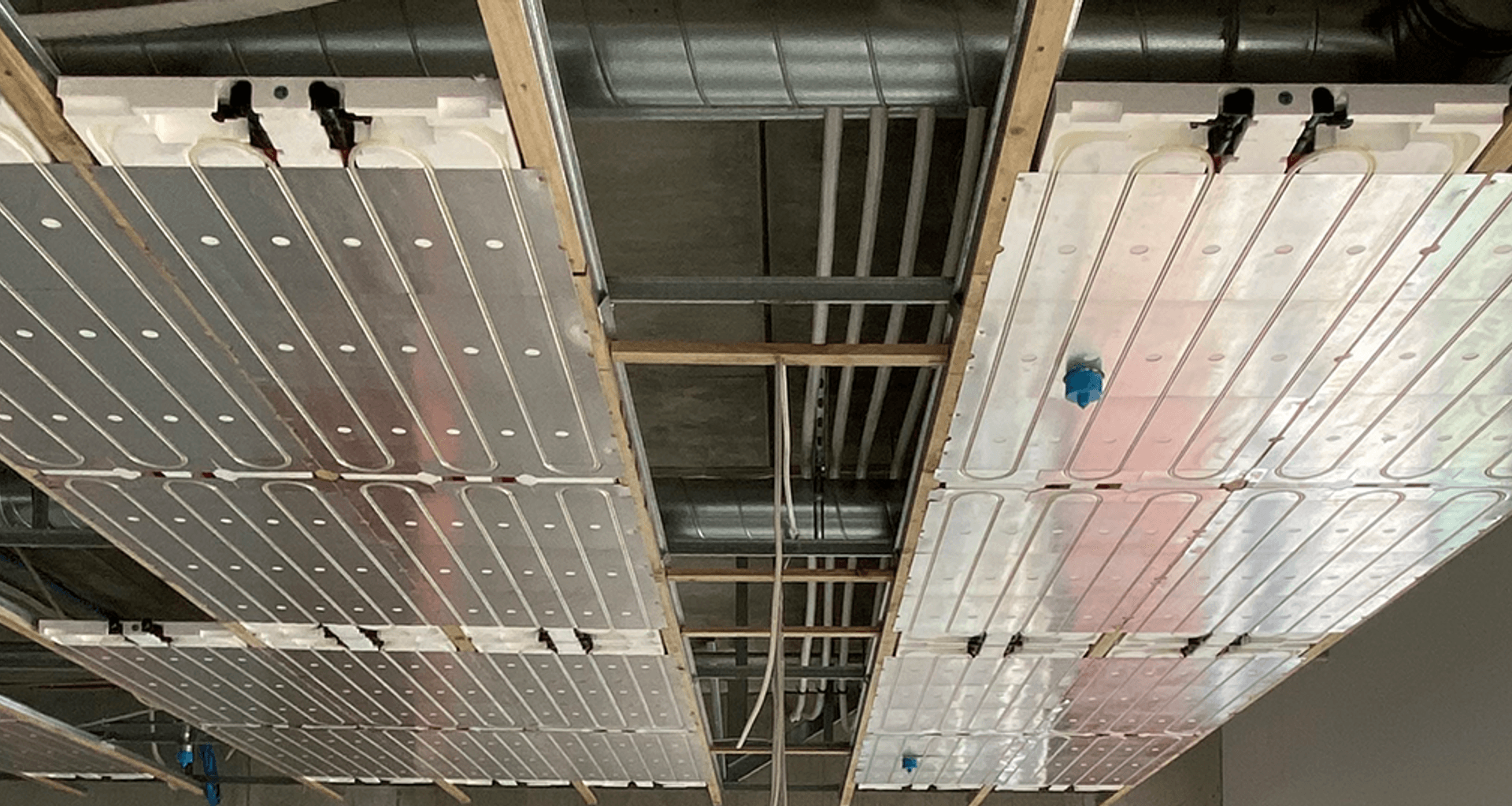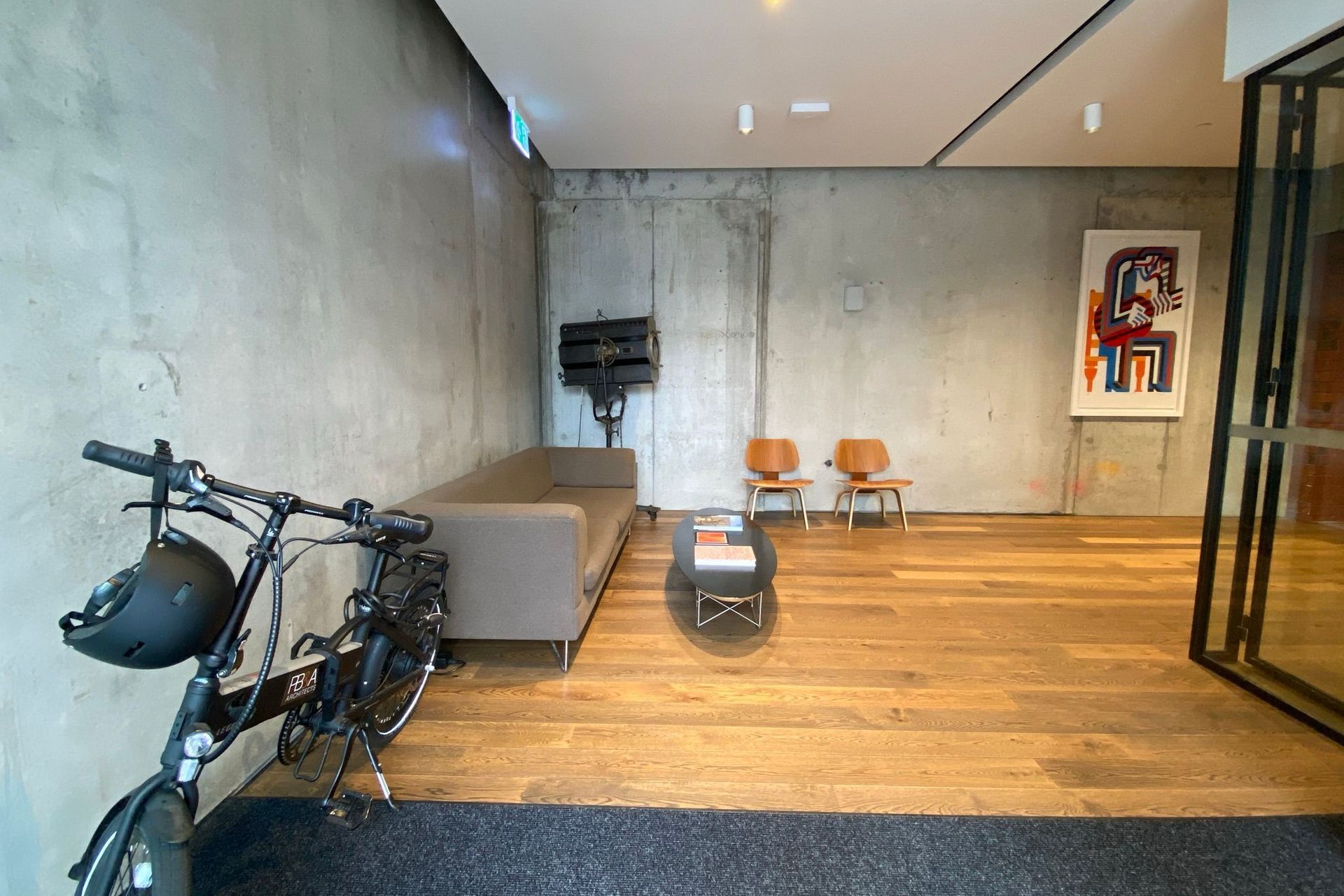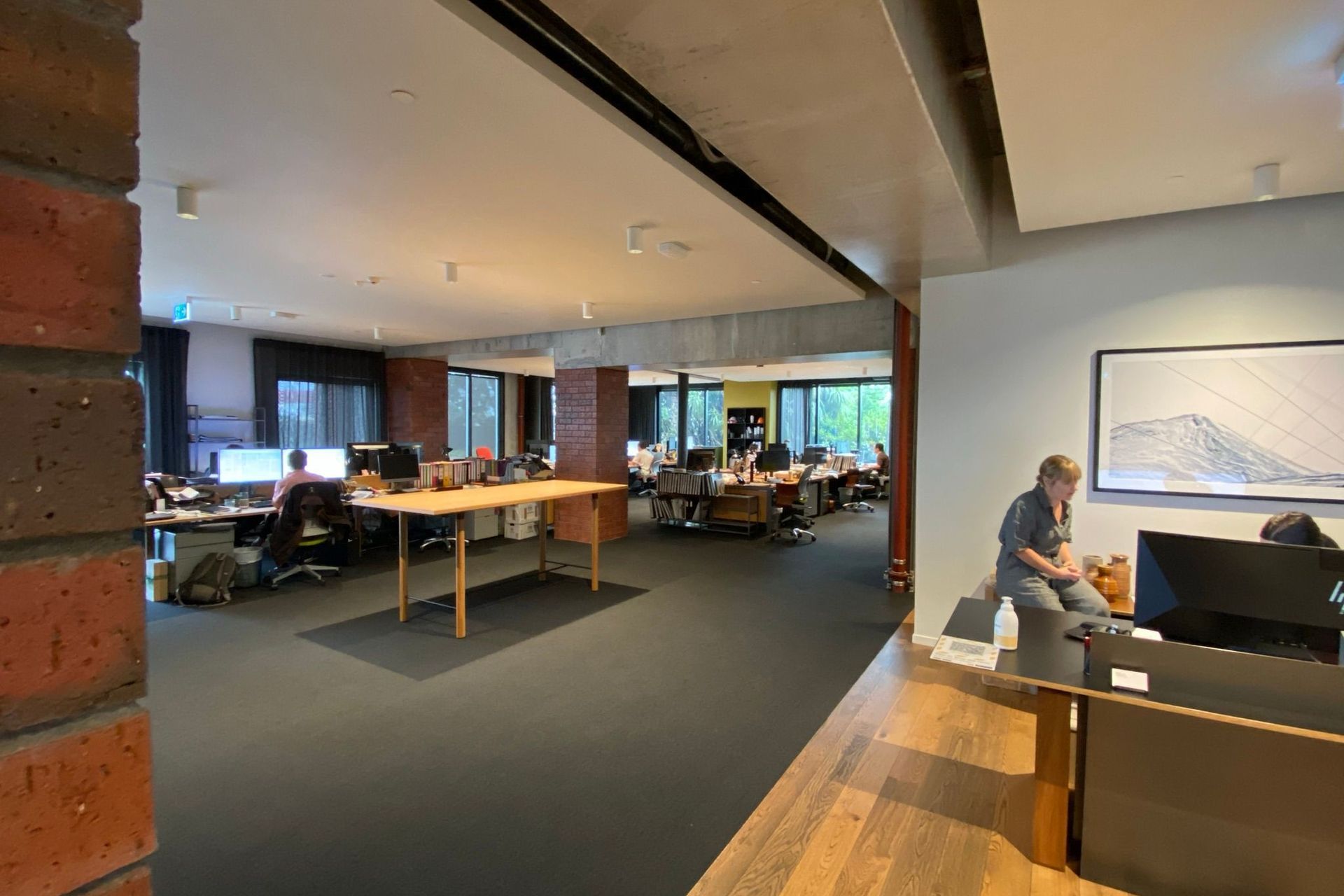Ditch convection and turn on to radiant
Written by
07 September 2021
•
7 min read

Anyone who has worked in an open-plan office environment would be aware of the ‘Goldilocks effect’; that phenomenon where part of the office is too hot, part is too cold and only a very small part in the middle is just right…
Small, manual adjustments to one thermostat can result in a whole HVAC system being thrown out of whack, with sudden blasts of air cascading down on unsuspecting souls in an entirely different part of the office.
Believe it or not, there is a solution to all this air-borne drama; Active Ceiling—an air-to-water, radiant heating and cooling system that is concealed behind the ceiling plane to achieve a comfortable ambient temperature in any space.
“It’s a similar concept to underfloor heating,” says Waterware Technical Director, Darren Yearsley. “The system is powered by an air-to-water heat pump that creates hot or cold water, which is then circulated through the radiant panels that are situated within the ceiling cavity.
“What happens is you achieve even heating or cooling from wall-to-wall; nullifying the ‘Goldilocks effect’ and because you're not actively moving the air within the space, the system is completely silent.”
Darren says radiant heat is the warmth you feel from the sun even though the surrounding air temperature may be quite low.
“There is a common misconception that heat rises; it does not, hot air rises causing the constant cycling of hot and cold air that you get with a traditional heating/cooling system. By comparison, radiant heat acts directly upon the objects in any given space warming them and thereby indirectly warming the air around them, creating a feeling of warmth and comfort.
“Likewise, having a heat source over a larger surface area means a less intense heat is required. Typically, with a radiant system, the heat source is five degrees either side of the target temperature. That is, if your target temperature for the space is 20 degrees, then to heat that space you would set the system to 25 degrees, or, if you want to cool the space you would set the system to 15 degrees to achieve an ambient temperature of 20 degrees.”

Paul Brown & Associates: the case for Active Ceiling
“Waterware presented the Active Ceiling system to us in early 2019,” says Max Irving-Lamb, Architectural Graduate at Paul Brown & Associates. “At that point we already knew that we would be moving into our new office space in 2020”
“The system caught our interest for a couple of reasons. Firstly, its functionality—using the Waterware system meant that we would be able to avoid some of the short-comings of a traditional system, such as irregular temperature zones—which plagued our previous office. The system’s ambient nature meant it would be completely in the background, creating a subtle effect, much less invasive with no air movement, like more traditional heating/cooling methods—making for a more comfortable work environment.
“Secondary to this was aesthetics and being able to conceal the system. This suited the industrial look of the apartment building in which our office space occupies the ground floor. Ideally, we wanted to avoid multiple high wall units, so it was a bonus that the system could be concealed behind the floating ceiling without detracting from the overall industrial aesthetic.”
Max says the system was installed towards the end of 2020 and the firm moved into the new space in December. As it was an entirely new technology, there were a couple of teething issues at the beginning.
“The system did under-deliver on cooling in the beginning due to a handful of issues outside of the system itself, inclusive of venting to the car park space below our office and the extent of solar gain, being a predominately glazed office space. Both issues have been addressed and serve as a bit of a learning curve ahead of this summer.
“Transitioning between the heating and cooling function does require some level of manual control, however, once we understood this, in terms of performance, we have been impressed so far. The system has maintained a good relative temperature that has remained nice and even across the day.
“As a practice, we have always been interested in exploring innovative technologies and the more used to using the system we become, the more we realise just how simple it is. As is the seamless integration into the building’s fabric.”
Max says the company learnt a lot working with Waterware and with Regency Plumbing, who carried out the installation of the system.
“Getting to this point has involved a high level of coordination with all of the stakeholders. Incorporating water pipes across the ceiling takes a practiced hand and requires everyone to be on board. The whole process went pretty smoothly and post-moving in, the Waterware team has been in constant touch ensuring we are getting the best out of our investment in the system. They have been great to work with.”

Active Ceiling: European innovation now available in New Zealand
“This is a new technology in New Zealand; radiant cooling has been available in New Zealand for 3–4 years and the Active Ceiling system for 2–2.5 years—few people even know it exists,” says Darren.
“Installation is around 25 per cent more in terms of capital cost, but running costs equate to a saving of around 30–40 per cent over traditional modes of heating and cooling, so the system pays for itself over time.
“Also, air-based systems require twice-annual maintenance, whereas a radiant system has no ducts or grills and therefore does not require servicing.”
The system comprises an air-to-water heat pump and a series of ceiling panels through which the heated or cooled water circulates.
“The panels are manufactured in Italy and measure 600mm x 2400mm, although they can be split at 1200mm. Based on the required heating and cooling load we calculate the number of panels needed to provide 60 per cent coverage of the ceiling area, with the remaining 40 per cent is reserved for lighting and other cabling.
“There is no practical limit on system size; the system we designed for Paul Brown & Associates was to accommodate a 400 sqm space, we have also designed a couple of systems to be used in 900 sqm child care centres.”
Darren says Active Ceiling is the most optimal way of achieving and maintaining a comfortable interior environment.
“With a radiant system, the sweet spot sits at around three degrees variance from the target temperature. With a traditional system, the variance from the target temperature can be as low as 0.5 degrees before people start to feel the difference in temperature.
“Creating a comfort zone that has a wider sweet spot means less running costs. It also creates a lower-stress environment as there are no arguments amongst staff about the space being too cold for some and too hot for others. Also, because the system has a lower thermal mass, you will usually notice the heating/cooling effect within five minutes.”
While the current systems have been designed for commercial applications, Darren says the system is ideal for residential applications as well.
“Being completely concealed behind the ceiling, the system is a great option for homes where the look is very contemporary, with minimal visual intrusions. While it’s true the system is best installed at the build stage, it can be retrofitted behind a dropped ceiling. The system is also solar PV compatible for those looking to make less of an environmental impact.
“We are in the process of developing a show home programme, with a plan for five show homes throughout the country. The first is up and running in Auckland at Hobsonville Point through David Reid Homes and specifiers and homeowners can contact us to make an appointment to visit the show home and experience the system for themselves.”
Learn more about the Active Ceiling system available through Waterware.